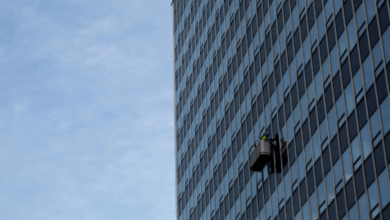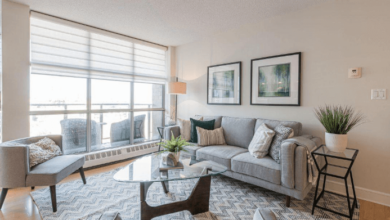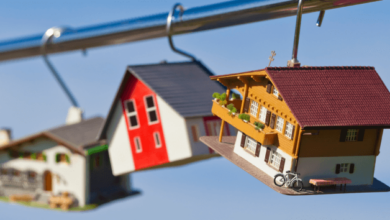A Renter’s Guide to Finding a Suitable Rental Home in Austin

Austin, the capital of Texas, is a vibrant and diverse city known for its live music scene, outdoor recreation, and thriving technology industry. As more people move to Austin for work or lifestyle changes, finding a suitable rental home that fits your needs and budget can be a challenge.
Read on to learn insider tips and tricks for a stress-free rental experience in the capital of Texas.
Determining Your Budget
The first step is determining your budget. As a rule of thumb, your rent should be under 30% of your gross monthly income. Consider other recurring costs like utilities, transportation, groceries, and entertainment.
Ideally, you should have around 20% left over after paying for necessities. Have a clear budget in mind before you start searching so you only consider viable options. Rentals in Austin come in diverse price ranges. Studio apartments start around $1000, while luxury single-family homes can cost $2000+ a month.
Property Types in Austin
Before deciding on the location, you need to consider what type of rental suits your needs.
Houses
Renting a house provides more privacy, space, and customization. Look for a property that has a garage, yard, laundry room, and storage space if needed. Keep in mind that exterior maintenance, like lawn care, falls on you as the tenant.
Apartments
The apartments for rent in Austin range from budget studios to luxury high rises with five-star amenities. These complexes offer convenience as all maintenance is handled by the property managers. Before renting, consider square footage, amenities, rental terms, and if utilities are included.
Condos
Condo rentals can be a good compromise between apartments and homes. You get more space and privacy along with shared amenities.
Townhomes
Townhome rentals provide multi-level living and often include amenities like pools or gyms. The main benefit is having your own entrance while sharing walls. Townhome communities are common in the suburbs.
Deciding on Location
Once you’ve settled on the property type, it’s time to settle for a neighborhood in the capital of the Lone Star State. Narrow your search by identifying areas that make sense for your lifestyle.
Downtown
Downtown Austin offers vibrant nightlife, restaurants, and cultural attractions. Rents for high-rise apartments range from $1600 for a studio to $3500+ for two bedrooms. However, downtown living means paying more for amenities like gyms, pools, and proximity to the urban core.
East Austin
East Austin has funky, artsy neighborhoods. Homes here are more affordable, but the area is quickly renovating. Consider East Austin for an eclectic vibe near downtown.
South Austin
South Austin offers proximity to outdoor spaces like Zilker Park and Barton Springs, and neighborhoods like Bouldin Creek and South Lamar are popular for their quirky, residential feel. Rents range from $1700-$5000+.
North Austin
North Austin neighborhoods like Allandale and Crestview have good schools, parks, and quick highway access. The area is more residential and family-friendly. Rents go from $1400 for apartments to $2000+ for houses.
West Austin
West Austin offers luxury apartments and homes near Hill Country. Upscale neighborhoods like Tarrytown and West Lake Hills come with premium price tags, so you can expect to pay $1300+ in rent.
Read more First Impressions Matter: The Role of Cleanliness in Customer Retention
The Rental Process
Once you’ve identified properties that fit your criteria in a location that suits you and your family, it’s time to apply. The rental process in Austin involves a few key steps:
Touring
Schedule walkthroughs for rentals you’re serious about. Get a feel for the space, take pictures/videos, and ask questions. Ensure the unit matches what was advertised.
Application
Submit a Rental Application, which includes info on your income, employment, rental history, credit score, and references. There is often an application fee of around $50 per adult.
Background & Credit Check
The landlord will do a background check and credit check. They want to verify your identity and ensure you pay rent consistently. Having good credit and references helps.
Lease Signing
If approved, you’ll sign the lease agreement and put down any required deposits. Make sure to read the lease carefully before signing.
Move-in
Once the lease is signed, coordinate your move-in date. Some landlords require renters insurance. Arrange utilities, parking, and other details.
Lease Considerations
Understanding lease terms is crucial when renting in Austin. Here are key factors to consider:
- Length – Typical leases are 6 months, 1 year, or 2 years. Shorter leases offer flexibility but cost more monthly.
- Rent Increases – The lease should specify the rate and frequency of any rent increases.
- Breaking the Lease – Check the early termination policy and associated fees.
- Extensions – See if extensions to the lease are allowed and under what terms.
- Subletting – The ability to sublet with landlord approval can provide more options.
- Maintenance & Repairs – Know who is responsible for repairs like plumbing, electricity, etc.
- Renovations & Decor – See what changes like painting are allowed and any restrictions.
- Smoking – Many Austin apartments are now smoke-free. Check if there are designated areas.
- Guests – Some landlords limit the duration guests can stay to prevent unauthorized tenants.
- Pets – Check rules on number of pets, size, breed restrictions, pet deposits, etc.
Carefully going through the lease agreement protects you and ensures no surprises down the road.
Tips for a Smooth Rental Experience
Follow these tips for an enjoyable experience renting in Austin:
- Understand your basic tenant rights to prepare yourself in case any disputes arise with your landlord.
- Take photos when moving in to document the unit’s initial condition; this protects your security deposit.
- Introduce yourself to neighbors and exchange contact info; having good relationships prevents issues.
- Report maintenance needs immediately before small issues become big problems.
- Keep communication open with the landlord and notify them of any changes.
- Avoid excessive noise, especially during quiet hours specified in the lease.
- Read lease documents and building rules thoroughly to avoid inadvertently violating them.
- Provide proper notice before moving out, as required in your lease.
Following these tips and maintaining open communication with your landlord can help ensure a smooth rental experience.
Conclusion
Renting in Austin can be an exciting adventure with its vibrant neighborhoods and endless amenities. By following the guidance outlined above, you can find an ideal rental home that suits your lifestyle and budget.
Define your needs, narrow your search area, tour potential units in person, budget for all costs, and negotiate lease terms. Understanding your rights and responsibilities as a tenant will lead to an enjoyable, hassle-free stay.








